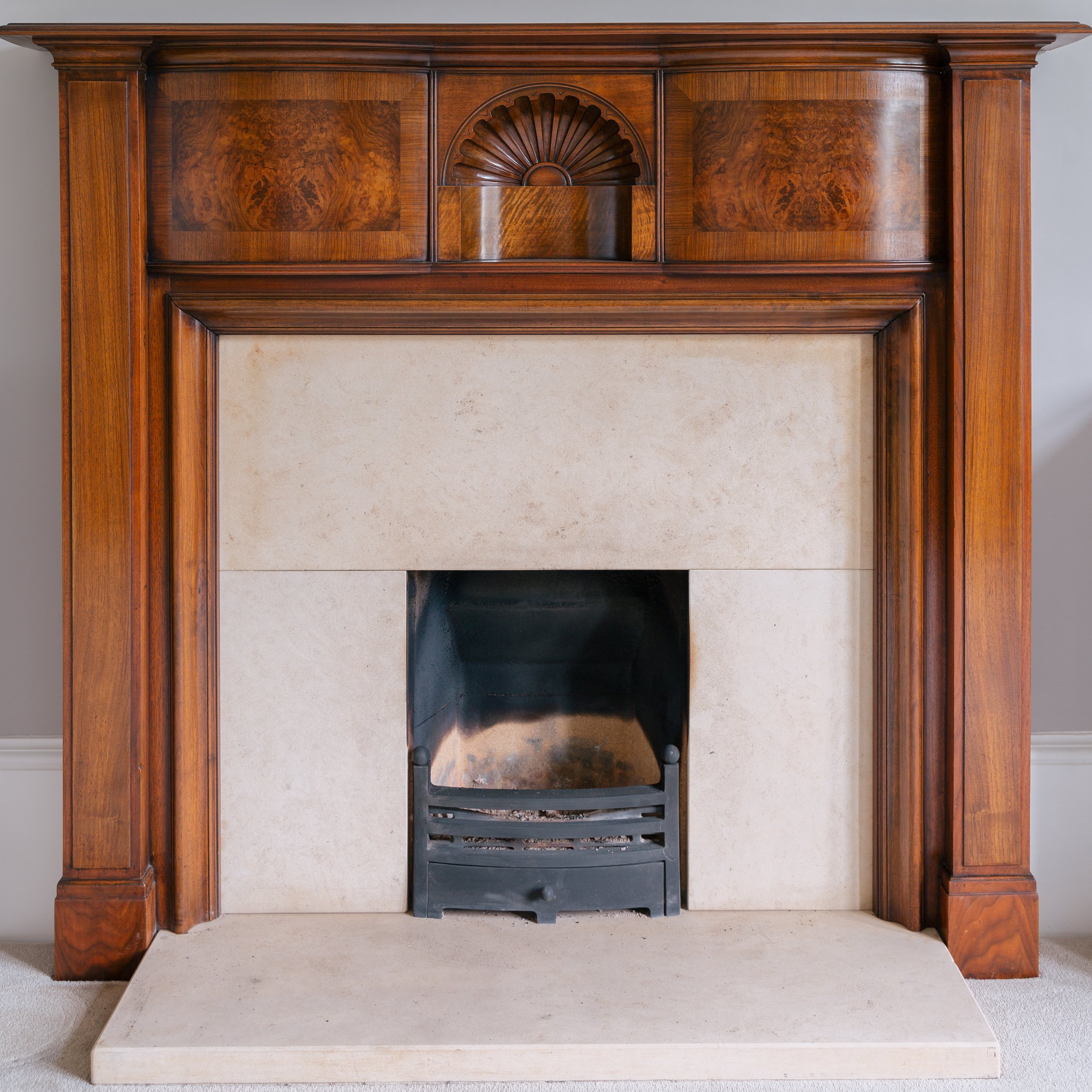
Widmerpool Hall
Our client contacted us in 2023 after a huge leak in the ceiling above the ball room, the damage was extensive to both the original wood panelling, the walls and the ornate ceiling with mouldings.
It became apparent pretty quickly that this project was going to require a collaborative effort, so we contacted our colleagues at Wheathills. Alongside us Nigel and his team undertook the restoration on the oak panelling. Damaged mouldings and veneers were removed and replaced with new oak veneer. The painted panels that were recessed into the oak panelling suffered extensive damage. This required the painted panels to be stripped back, underneath we discovered silk damask wall covering which we believed to have been an original feature when the building was initially decorated.
Following this the panels were extensively filled, resurfaced and painted. As part of the requirements stipulated by the conservation officer, we were expected to complete the painting within the recesses free hand so as not to damage the newly fitted mouldings and veneer. The interfaces at which the painted wall and the oak veneer met were of great importance throughout the job for the sake of conservation. This is generally a lost part of the finishing process of today's craftsman. We were hyperaware throughout that this would be picked up on had there been any discrepancies in the paintwork and fortunately diligence and skill paid off and the finish was immaculate across all painted panels.
The ceiling was composed of a fibrous gypsum mix, many of the original mouldings had fallen away as a result of the leak and needed to be replaced. There was extensive damage to some of the cornice also, some of which were misplaced bobbins and missing petals on pinwheel flowers. These required remoulding and fitting back. Following this was an application of historical ceiling paint, required for Grade II listed buildings. This had to be applied very delicately due to the shape of the recesses on the mouldings and the ornate plasterworks which included urns and husks.
After the completion of the main hall, we were asked to undertake the rest of the decorative works throughout the house. This required minimal intervention as the finish from 12 years previously applied by myself and my dad had weathered the test of time rather well. The rest of the house also required specialist paint.
In the bathroom and bedrooms on the top floor of the property, there was erosion around the stone bullions surrounding the windows as a result of moisture damage. This required extensive filling and resurfacing. This entailed having to colour match against the original stone bullion colouring. A specialist paint finish was applied after resurfacing to ensure that the stone would withstand any further moisture. The original lead windows which the bullions surrounded also required a refresh of paint as they had become oxidised and left a rust patina much to the client's distaste.

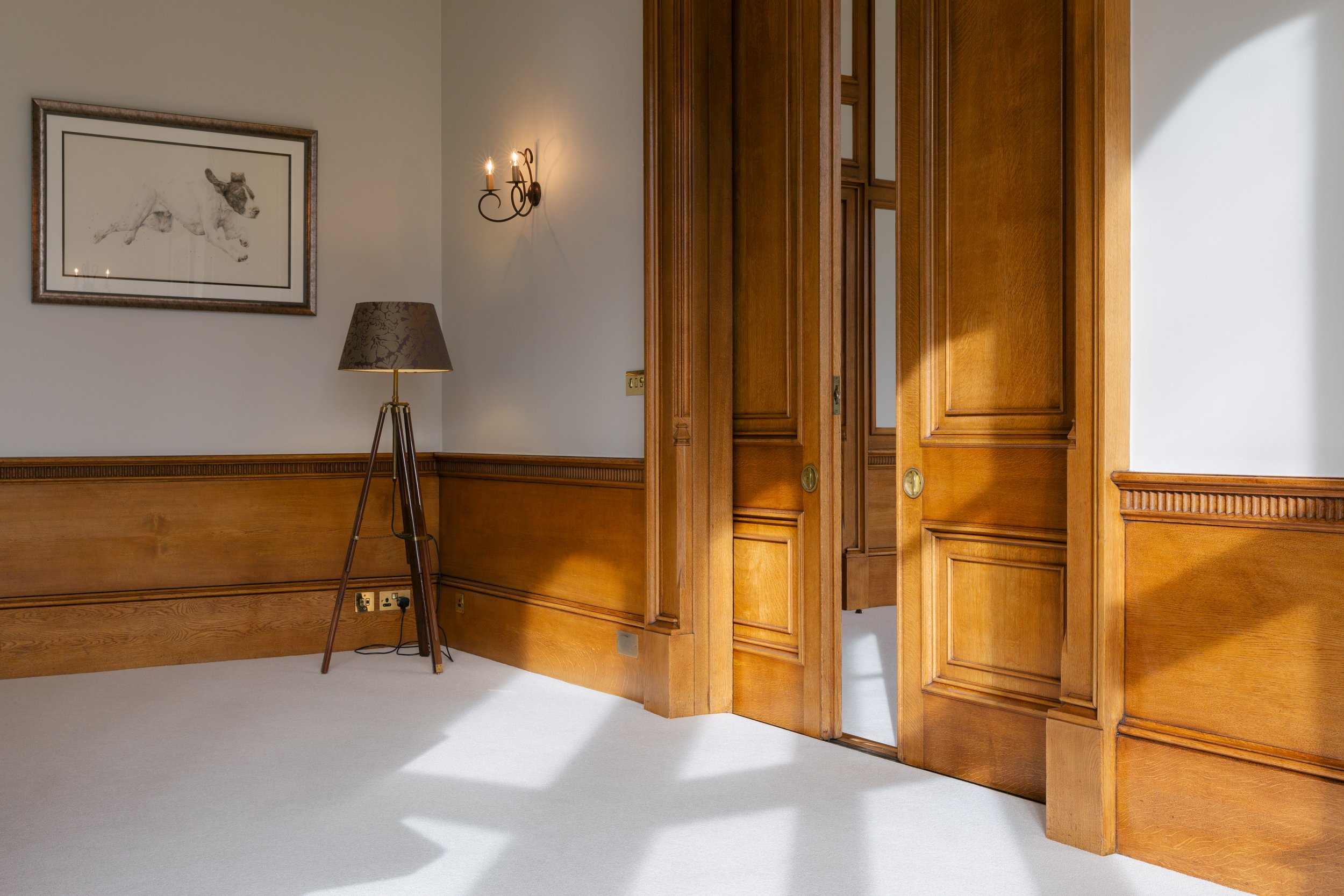




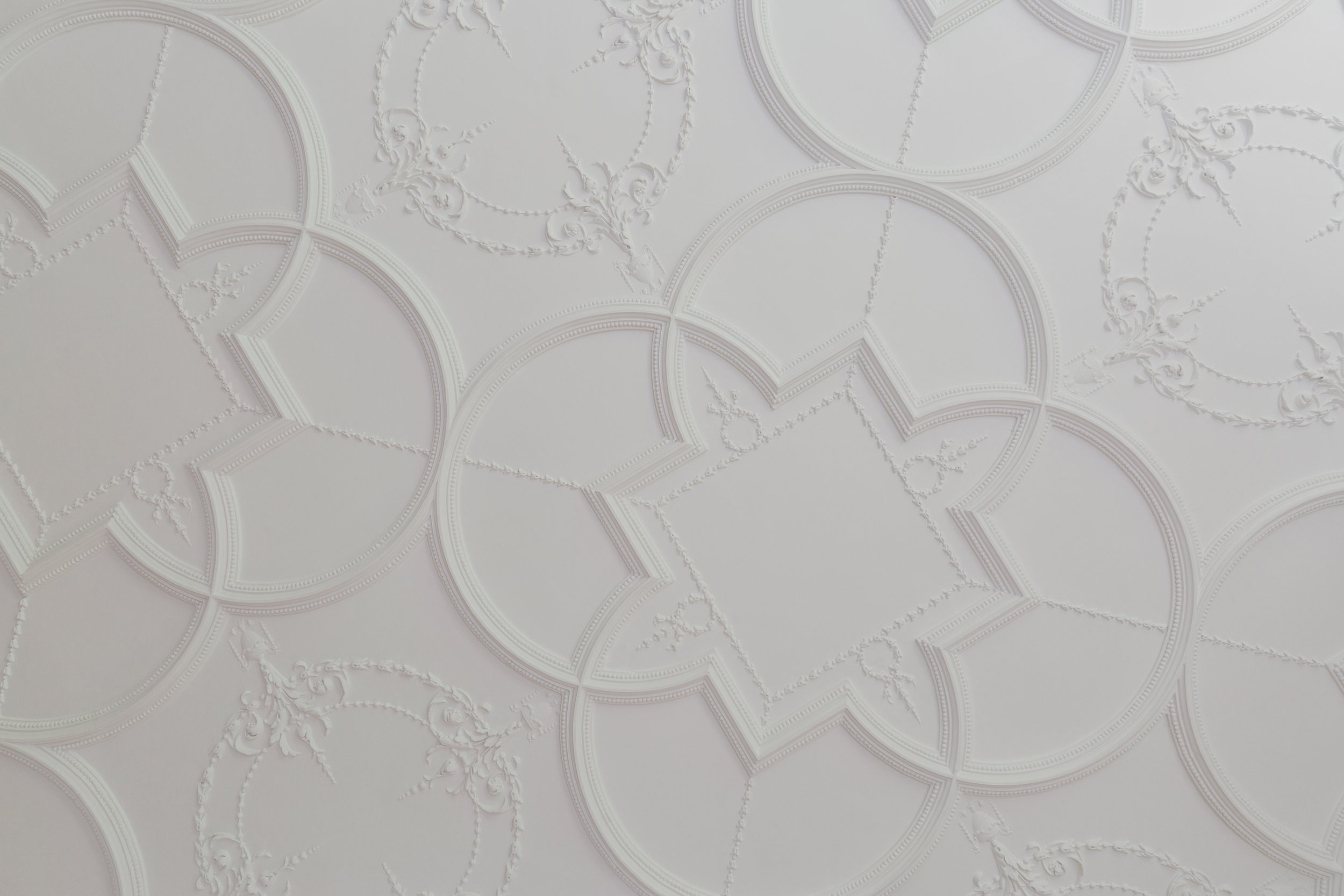
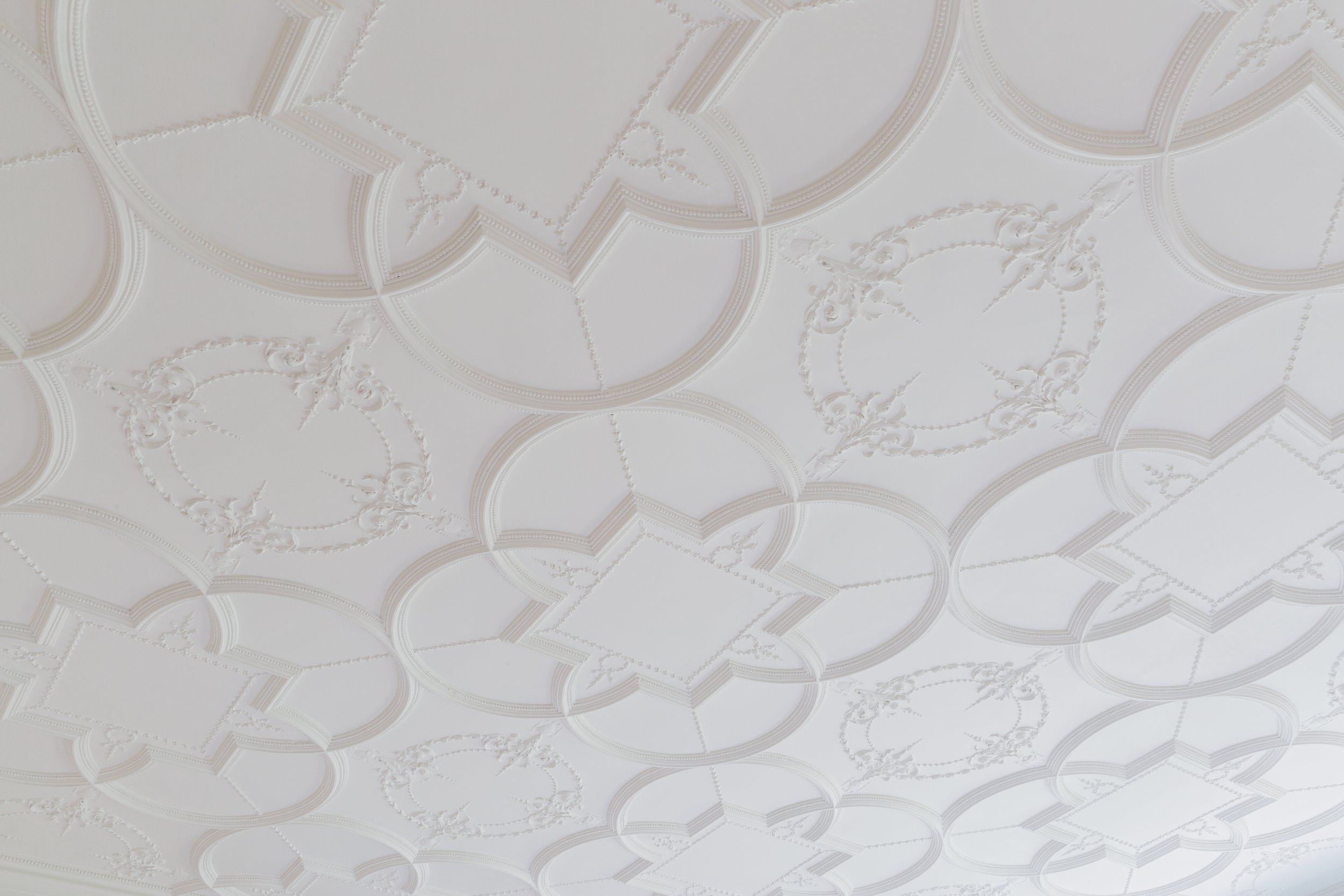

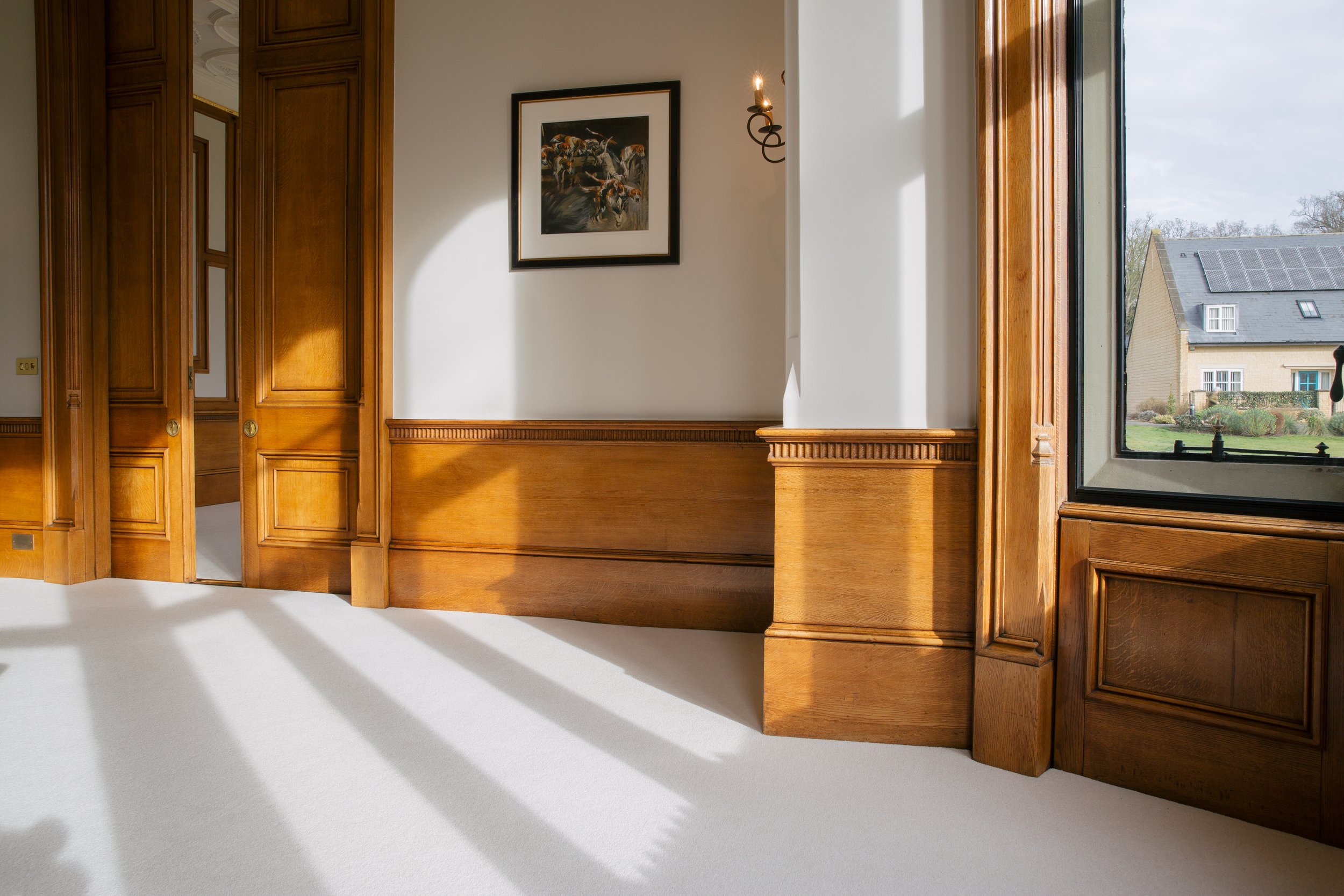
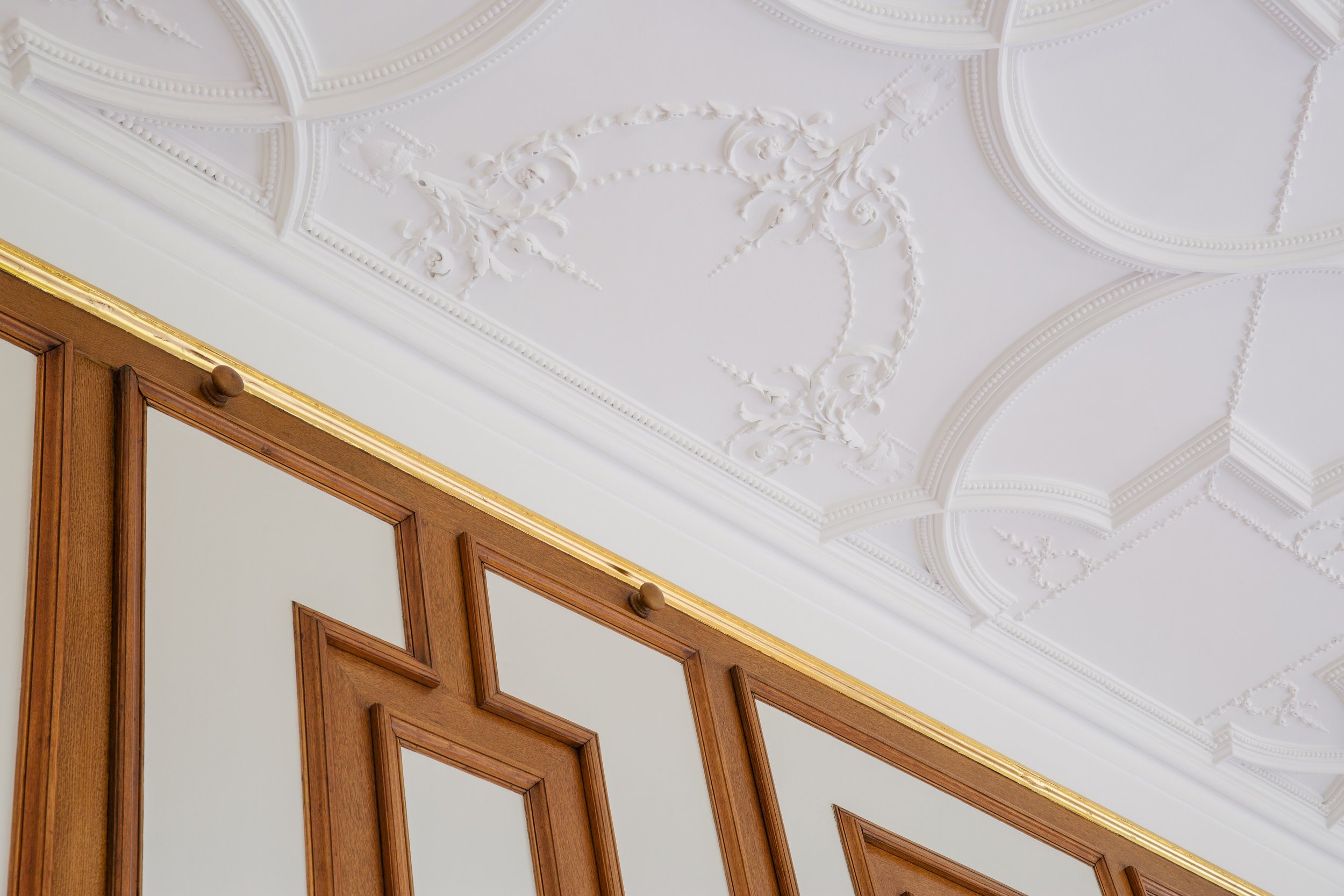
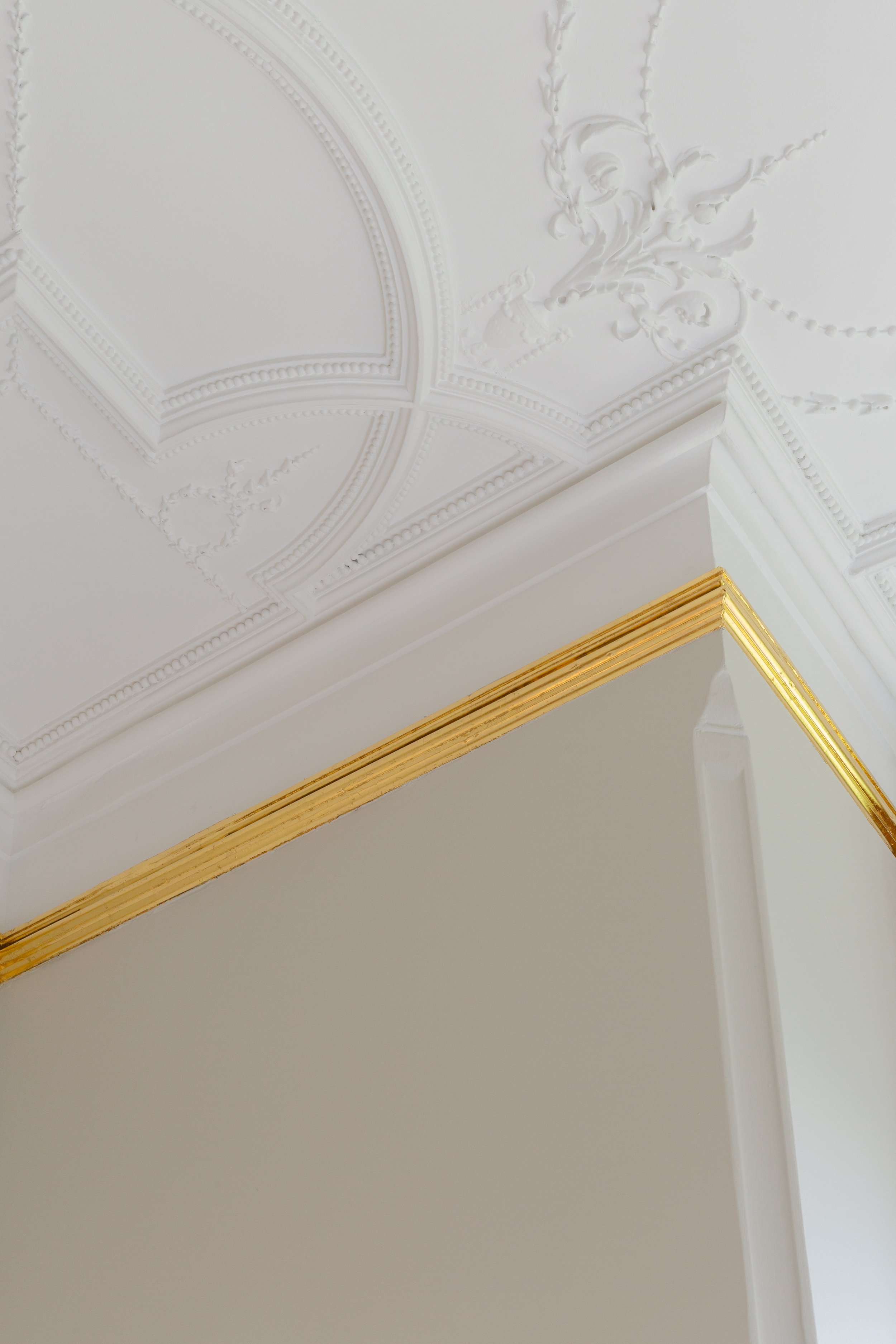

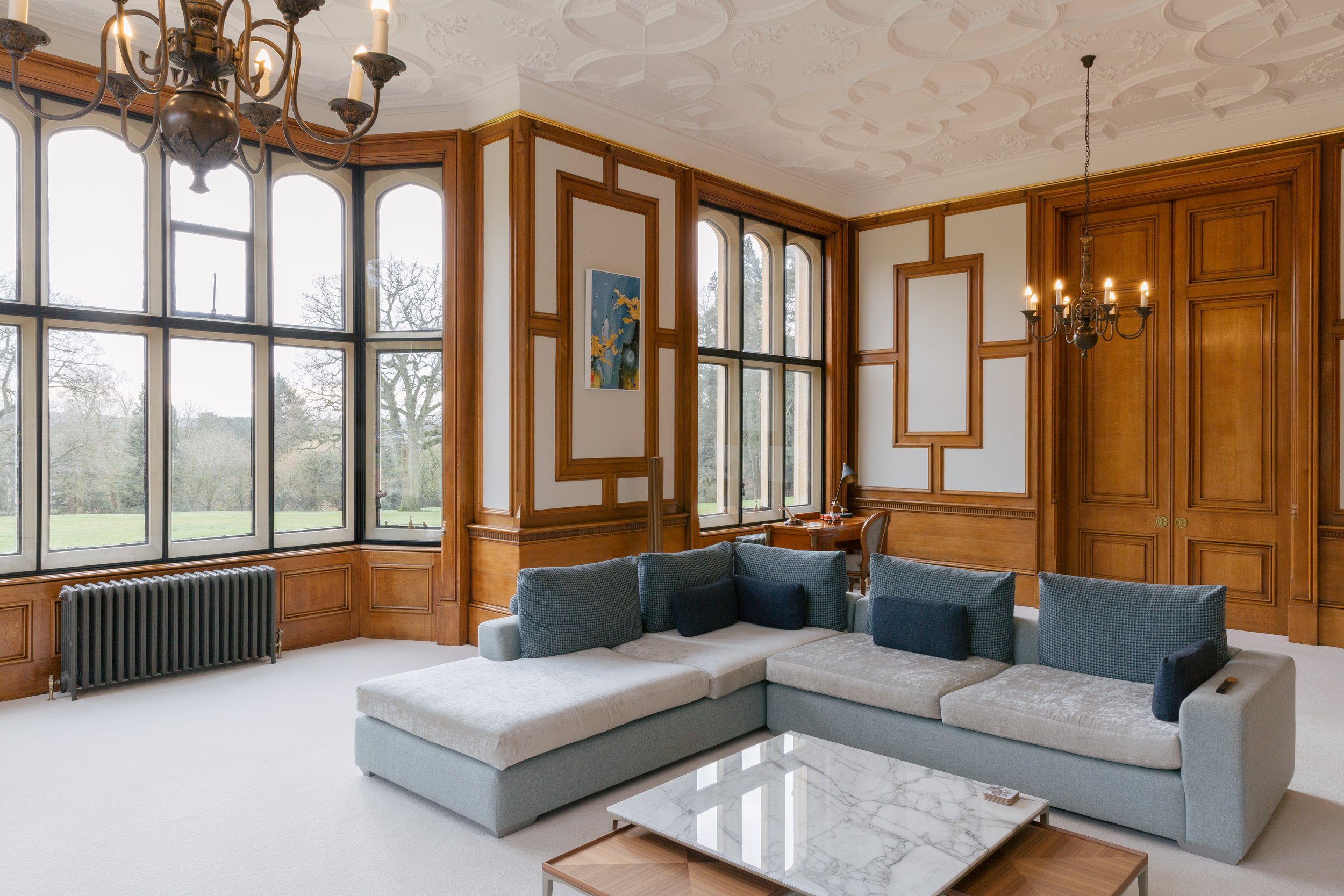
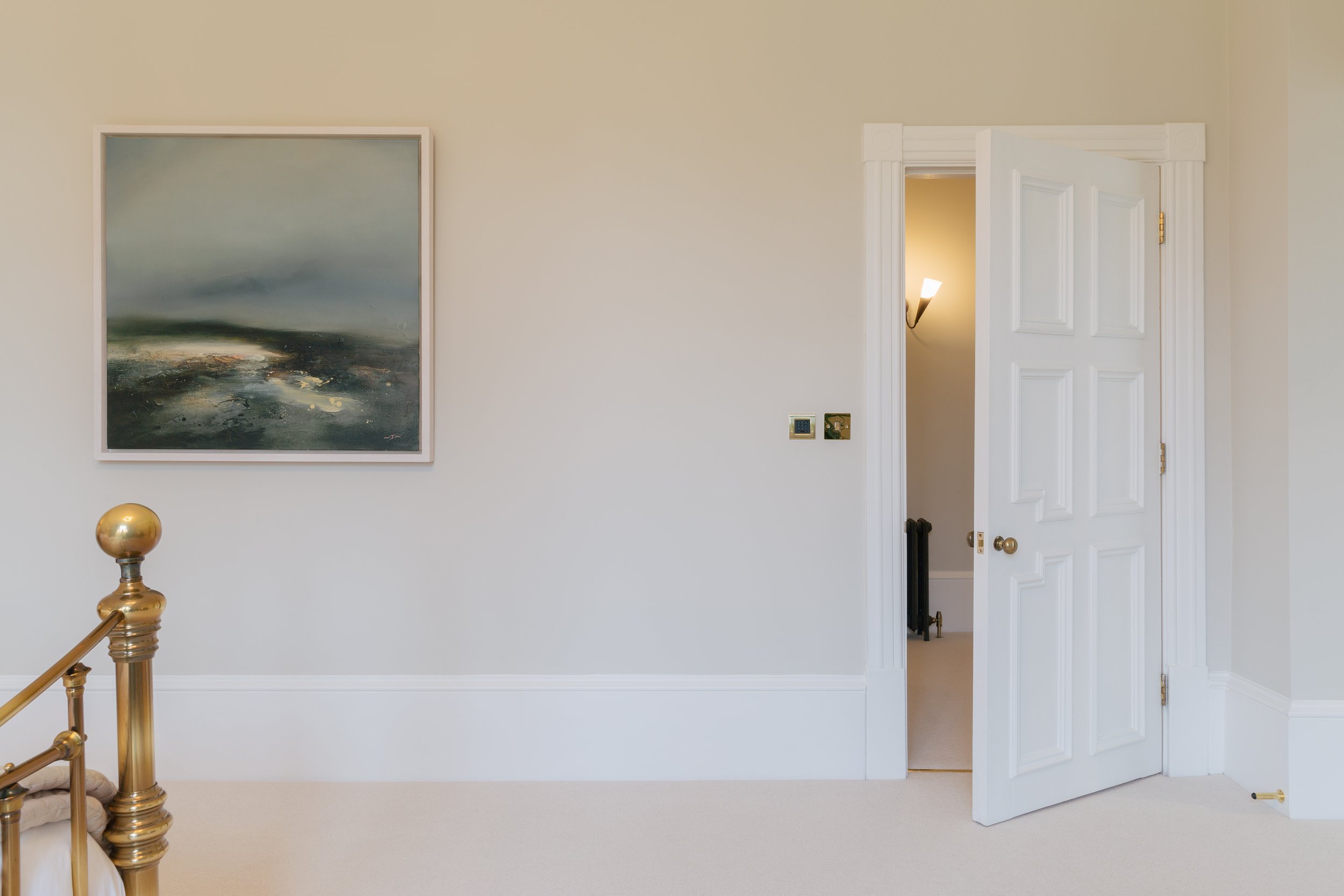

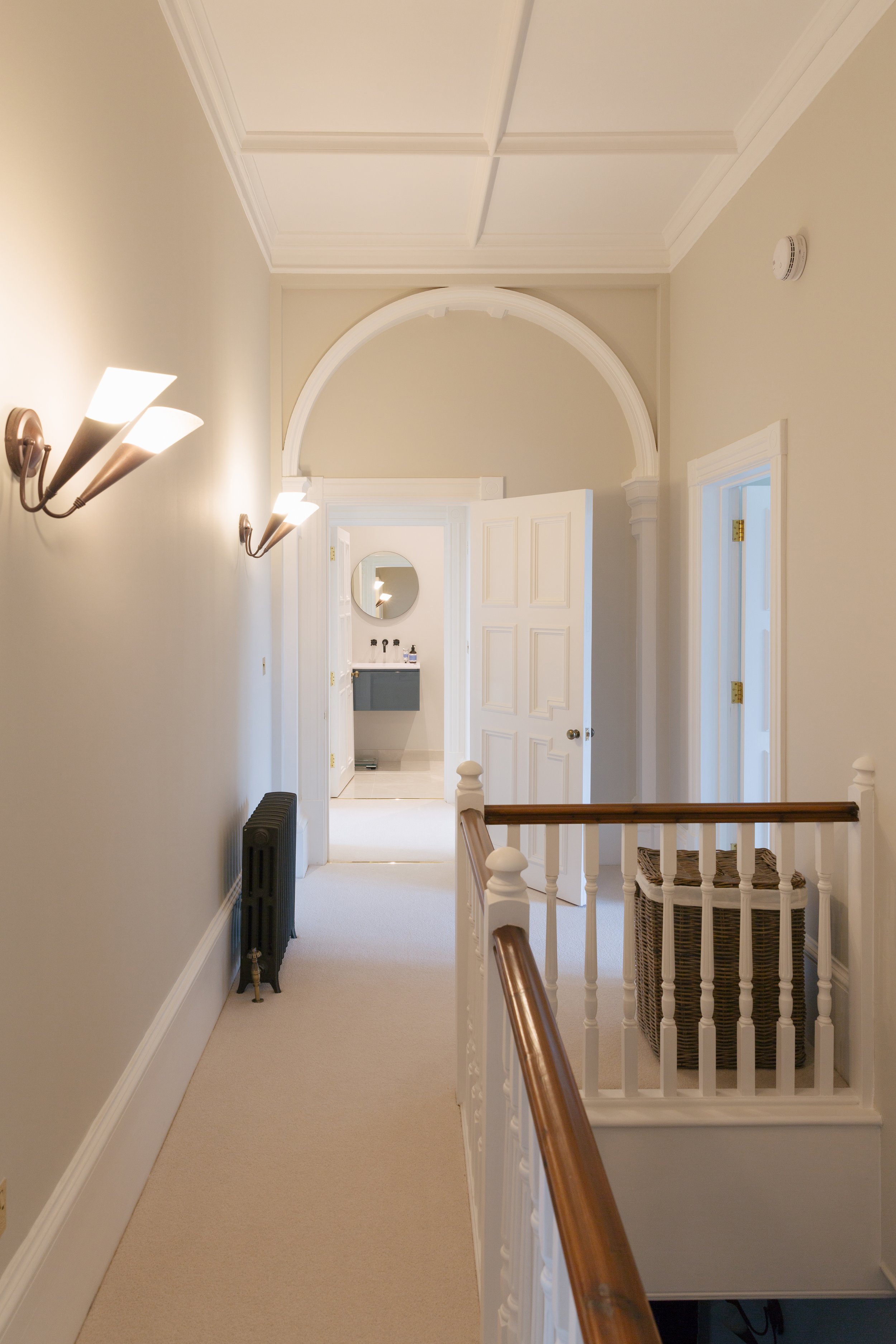
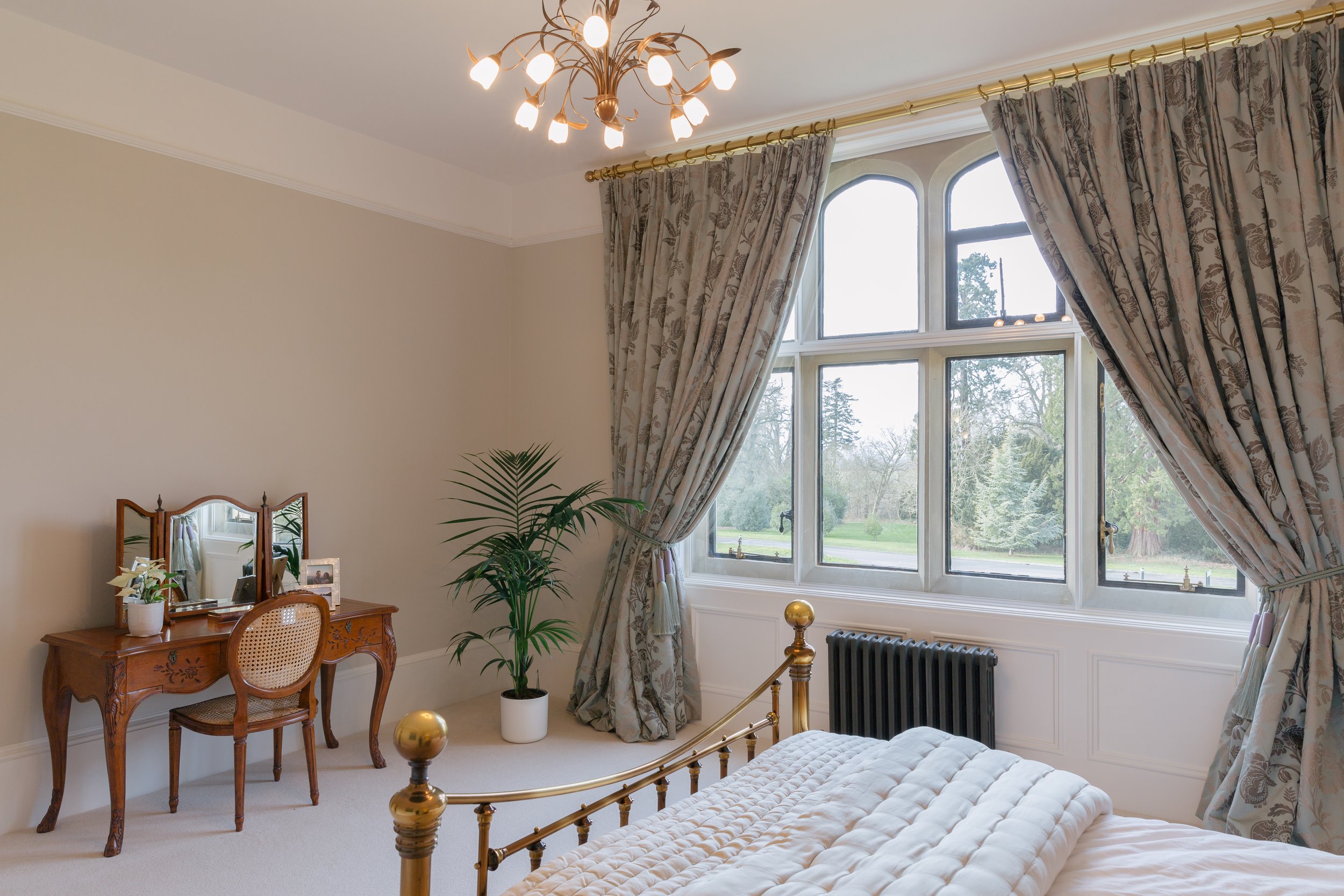
A 150-year-old fireplace surround was unearthed by a client when he was replacing his fire. It had been concealed behind a stud wall when the previous owner no longer made use of the coal fire.
Years of grime and dust had all but lost the pattern of the grain and the ornately carved features of the walnut surround. Initially we were asked if we could paint it a contemporary colour. However, after a discussion with the client we managed to convince him that restoration would be a much more suitable approach for the overall aesthetic.
After intensive and thorough cleaning of the surround we were able to uncover the beauty within the wood; the carvings and the grain. The surround required many coats of French polish which was then waxed and buffed to achieve the finish. The idea was to make the surround look as it had done in its glory days when it had been made 150 years ago.
The client loved the overall look so much that in order to make the surround a main feature in the lounge, he requested that we colour match his rosewood speakers to the same finish.

